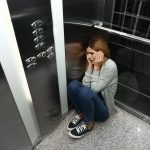Claustrophobia is a common anxiety disorder that affects individuals worldwide. It is characterized by an intense fear and avoidance of confined spaces or situations where escape may feel difficult or impossible. This fear can be debilitating and lead to significant distress in everyday life. If you or someone you know struggles with claustrophobia, exploring self-hypnosis as a tool for overcoming this fear can be highly beneficial.
Understanding the Causes of Claustrophobia
Claustrophobia can stem from various sources, and the causes may differ from person to person. Some common reasons why people develop claustrophobia include:
Traumatic experiences: Individuals may develop claustrophobia after experiencing a traumatic event, such as being trapped in a confined space or having a panic attack in a small, enclosed area.
Learned behavior: Some individuals may develop claustrophobia if they witness someone close to them exhibiting fear or anxiety in confined spaces. This learned behavior can influence their perception and response to similar situations.
Pre-existing anxiety disorders: People with pre-existing anxiety disorders, such as generalized anxiety disorder or panic disorder, are more susceptible to developing claustrophobia. The fear of being trapped or not having control can exacerbate their existing anxiety.
Common Solutions for Claustrophobia
The common solution for claustrophobia often involves a combination of therapy and exposure-based techniques. These may include:
Cognitive-behavioral therapy (CBT): CBT helps individuals identify and challenge irrational thoughts or beliefs associated with claustrophobia. It teaches coping mechanisms and strategies to manage anxiety and gradually face triggering situations.
Exposure therapy: This approach involves gradually exposing individuals to confined spaces while providing them with tools and support to manage their anxiety. The exposure is carefully controlled and progresses at a pace the individual is comfortable with.
Relaxation techniques: Relaxation techniques like deep breathing, progressive muscle relaxation, and meditation can help manage anxiety symptoms. These techniques can be used to promote a sense of calmness and relaxation when facing claustrophobic triggers.
Why Consider Self-Hypnosis to Help with Claustrophobia?
Self-hypnosis can be a valuable addition to traditional therapies when addressing claustrophobia. Here’s why self-hypnosis should be considered:
- Empowers Self-Management
Self-hypnosis puts you in control. By learning this skill, you can manage your anxiety and fears independently. It gives you the ability to access a state of deep relaxation and focus, allowing you to change your response to claustrophobic triggers. - Addresses the Root Cause
Self-hypnosis helps explore and address the root cause of claustrophobia. By accessing the subconscious mind, you can uncover any underlying fears or traumatic experiences contributing to your claustrophobia. You can then work on reprogramming your mind to respond differently in these situations. - Builds Confidence
Self-hypnosis techniques can help build confidence and increase self-belief. By practicing self-hypnosis regularly, you can create positive suggestions and affirmations that promote feelings of calmness, safety, and control when facing claustrophobic triggers. - Personalization to Individual Needs
Self-hypnosis techniques can be tailored to your specific needs. As everyone’s experience with claustrophobia is unique, self-hypnosis allows you to create personalized scripts or visualizations that target your specific fears and triggers.
Steps to Overcoming Claustrophobia with Self-Hypnosis
To overcome claustrophobia using self-hypnosis, follow these steps:
Education and Understanding: Educate yourself about self-hypnosis and familiarize yourself with the techniques involved. This understanding will help remove any doubts or fears associated with the practice.
Goal Setting: Set clear goals for yourself. Define what you want to achieve through self-hypnosis and the specific aspects of claustrophobia you want to address.
Relaxation Techniques: Practice relaxation techniques such as deep breathing, progressive muscle relaxation, or meditation before starting your self-hypnosis session. These techniques help induce a state of relaxation and make self-hypnosis more effective.
Self-Hypnosis Scripts or Visualizations: Create or find self-hypnosis scripts or visualizations that are specifically designed to address claustrophobia. Focus on creating positive suggestions and affirmations that promote feelings of calmness, safety, and control when faced with triggering situations.
Repetition and Consistency: Practice your self-hypnosis sessions regularly. Repetition and consistency are key to reprogramming your subconscious mind and building new positive associations with claustrophobic triggers.
Seek Professional Guidance: Consider working with a qualified hypnotherapist or therapist experienced in self-hypnosis. They can provide guidance, support, and tailor the techniques to your individual needs.
Remember, overcoming claustrophobia is a process that takes time and patience. Self-hypnosis is a powerful tool, but it is important to combine it with other therapeutic approaches and seek professional help when needed.
Conclusion
Claustrophobia can be a debilitating fear, but with the power of self-hypnosis, you can regain control and overcome your anxiety. By understanding the causes of claustrophobia and considering self-hypnosis as a supplemental therapy, you can empower yourself to face confined spaces with calmness, confidence, and control. Follow the steps outlined, be consistent in your practice, and seek professional guidance when necessary. Embrace the potential of self-hypnosis to overcome your claustrophobia and open up a world without fear.














